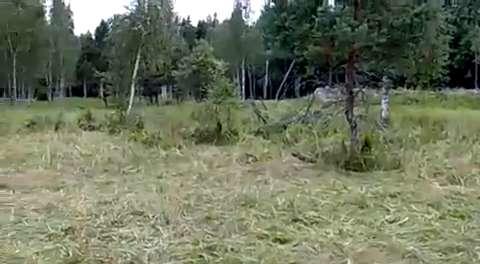Camo Test
Quite often the subject of camouflage comes up. There are areas that need to be looked at no matter the area you are in.
Three Dimensional camouflage should be used to break up the outlines whenever possible. If possible use the surround foliage to break up the pattern. Look like what is around you. I have seen a sniper spray glue a piece of carpet and stick it to the gravel substance on the rooftop and then lay it on top of him gravel side up to match. Bushes aren't always the answer, match the terrain.

Colors and patterns are always important as manufactures and the Military seem to have to learn time and time again. Cool doesn’t cut it. Tiger stripes in grasslands is quickly seen. Desert Camouflage in the woodlands shines. Fancy patterns drawn by a computer and deemed as neat rarely work. Black may or may not work depending on the terrain.

Certain parts of our bodies reflect light even with those high dollar fake tans. The face and hands are especially important and are also areas most likely to move during the hunt. Face paint works but is a pain; gloves and facemask are cheap and can be purchased or made to allow as much air as needed for ventilation depending on the weather. It's really important when you have a forehead like mine thats usually covered by a hat!

Blending in with surrounding terrain is also important and placing concealment between you and the item you are hiding from will help mask movement. Having items behind you will break up the all too familiar human form as well.
Make sure you check yours for yourself by either having someone elvaluate you or by taking simple pictures and looking for yourself to see what it/they are seeing.
These were taken as we left the swampland on this morning’s bowhunt in one of the few places that held water throughout the summer this year. No filled freezer today but the excitement of a 250+lb Boar that managed to circle downwind to us and close to 6 yds before we could actually see him made for an exciting morning!
Quite often the subject of camouflage comes up. There are areas that need to be looked at no matter the area you are in.
Three Dimensional camouflage should be used to break up the outlines whenever possible. If possible use the surround foliage to break up the pattern. Look like what is around you. I have seen a sniper spray glue a piece of carpet and stick it to the gravel substance on the rooftop and then lay it on top of him gravel side up to match. Bushes aren't always the answer, match the terrain.
Colors and patterns are always important as manufactures and the Military seem to have to learn time and time again. Cool doesn’t cut it. Tiger stripes in grasslands is quickly seen. Desert Camouflage in the woodlands shines. Fancy patterns drawn by a computer and deemed as neat rarely work. Black may or may not work depending on the terrain.
Certain parts of our bodies reflect light even with those high dollar fake tans. The face and hands are especially important and are also areas most likely to move during the hunt. Face paint works but is a pain; gloves and facemask are cheap and can be purchased or made to allow as much air as needed for ventilation depending on the weather. It's really important when you have a forehead like mine thats usually covered by a hat!
Blending in with surrounding terrain is also important and placing concealment between you and the item you are hiding from will help mask movement. Having items behind you will break up the all too familiar human form as well.
Make sure you check yours for yourself by either having someone elvaluate you or by taking simple pictures and looking for yourself to see what it/they are seeing.
These were taken as we left the swampland on this morning’s bowhunt in one of the few places that held water throughout the summer this year. No filled freezer today but the excitement of a 250+lb Boar that managed to circle downwind to us and close to 6 yds before we could actually see him made for an exciting morning!

Comment